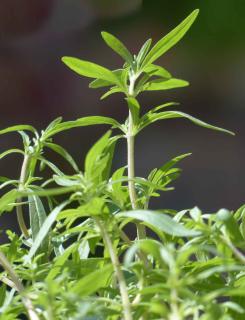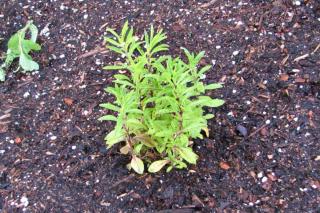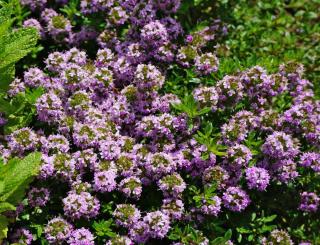

Common savory key facts:
Botanical name – Satureja hortensis L.
Common name – Common Savory
Family – Lamiaceae
Type: spice
Height: 8 to 16 inches (20 to 40 cm)
Planting distance – 12 inches (30 cm)
Exposure: full sun
Soil: rich, light, dry and well-draining
Planting – May
Harvest – May to October
A spice that’s a herb with medicinal value, common savory (Satujera hortensis) is a herbaceous annual plant that’s found in the wild in Southern Europe. It produces pubescent stems and narrow, peppery leaves that taste somewhat like thyme. Savory also bears melliferous flowers, white to pink in color. They’re edible and often used in infusions.
Satureja boasts many therapeutic benefits: its leaves and flowers are great stimulants, antispasmodic, antiseptic, fortifying agents and help digestion.
Easy to grow in a pot, and in the ground, too, common savory only requires very little care once it’s survived for a year in place.
Start sowing common savory from the month of March onwards, in a warm place, or from April onwards directly in the ground (May if you’re in a place with harsher winters).
Sow savory directly in a pot that’s 1½ to nearly 2 feet across (40 to 50 cm), filled with clean, sieved and well-draining soil mix.
Place the pot in a luminous, warm place (at least 65°F / 18°C). Water the seeds with a fine mist, and cover the surface of the pot with broken-down bark mulch.

With a small hoe, dig out shallow furrows in the ground, spacing them by 16 inches apart (40 cm).
Press the soil down at the bottom of the furrow with the back of your rake, and sow the common savory seeds along the whole line.
Cover the seeds with a thin layer of soil and drizzle water over it.

Find for it a sunny, hot spot, and space plants at least 12 inches (30 cm) apart to all sides.
Add coarse sand or gravel to the soil if it doesn’t drain well enough, and plant at the top of a ridge. Water upon planting, and then only in case of heat waves.

This herb loves sunny, warm places and soil that’s rich, dry and drains well – even limestone. Compact, clayish soils should be avoided, though.
It’s relatively easy to cultivate common savory in a garden box or pot: this makes it even easier to move it to hotter places in the sun on a balcony, deck or terrace.
Whether it’s planted directly in the ground or in containers, this condiment plant doesn’t require any further care, apart from regular watering if you want to have a continuous supply of fresh, soft leaves.
Common Savory is a plant that resists diseases and pests. Of particular interest in the vegetable patch is the fact that it repels most common pests insects, aphids in particular.

Flavors are much more intense when you eat savory that has just been picked. In order to keep your harvest for longer spans of time (over 8 months), dry the leaves on trays and store them in airtight jars. It’s also an option to freeze savory leaves in an ice tray. Chop the leaves into thin slivers, pack them in the tray, and cover in olive oil; place the tray in the freezer.
Savory leaves will enhance the taste of salads and cooked vegetables, and will work wonders to spice up grilled meats, marinades, and different types of gravy.
Something many people don’t know is that savory leaves also pair well with desserts, to add a nice touch to applesauce or sprinkled as slivers on a crumble pie.
Note that you shouldn’t add too much savory to your recipes, because the taste is quite strong and it might overtake that of other ingredients.